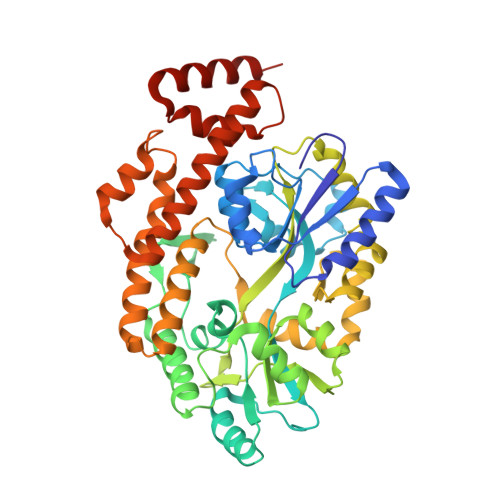Crystal structure and activation mechanism of DR3 death domain.
Yin, X., Li, W., Ma, H., Zeng, W., Peng, C., Li, Y., Liu, M., Chen, Q., Zhou, R., Jin, T.(2019) FEBS J 286: 2593-2610
- PubMed: 30941855
- DOI: https://doi.org/10.1111/febs.14834
- Primary Citation of Related Structures:
5YEV, 5YGP, 5YGS, 5ZNY, 5ZNZ - PubMed Abstract:
Death receptor 3 (DR3) (a.k.a. tumor necrosis factor receptor superfamily 25) plays a key role in the immune system by activating nuclear factor kappa-light-chain-enhancer of activated B cells signaling pathway. Here we present the crystal structures of human and mouse DR3 intracellular death domain (DD) at 2.7 and 2.5 Å resolutions, respectively. The mouse DR3 DD adopts a classical six-helix bundle structure while human DR3 DD displays an extended fold. Though there is one-amino-acid difference in the linker between maltose-binding protein (MBP) tag and DR3 DD, according to our self-interaction analysis, the hydrophobic interface discovered in MBP-hDR3 DD crystal structure is responsible for both hDR3 DD and mDR3 DD homotypic interaction. Furthermore, our biochemical analysis indicates that the sequence variation between human and mouse DR3 DD does not affect its structure and function. Small-angle X-ray scattering analysis shows the averaged solution structures of both human and mouse MBP-DR3 DD are the combination of different conformations with different proportion. Through switching to the open conformation, DR3 DD could improve the interaction with downstream element TNFR-associated death domain (TRADD). Here we propose an activation-dependent structural rearrangement model: the DD region is folded as the six-helix bundles in the resting state, while upon extracellular ligand engagement, it switches to the open conformation, which facilitates its self-association and the recruitment of TRADD. Our results provide detailed insights into the architecture of DR3 DD and the molecular mechanism of activation. DATABASES: All refined structure coordinates as well as the corresponding structure factors have been deposited in the PDB under the accession codes 5YGS, 5YEV, 5YGP, 5ZNY, 5ZNZ.
Organizational Affiliation:
Hefei National Laboratory for Physical Sciences at Microscale, CAS Key Laboratory of Innate Immunity and Chronic Disease, School of Life Sciences and Medical Center, University of Science and Technology of China, Hefei, Anhui, China.

















